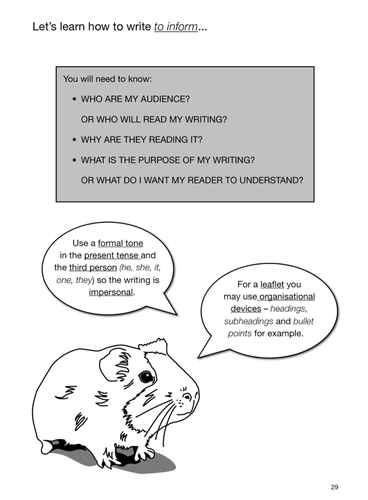












Information Writing is the essential guide for all students wanting to develop their literacy skills and improve their grades in English assignments and examinations. It is the third in the 'Teach Your Child to Write Good English series. Information Writing has been written by an experienced teacher and tutor with the needs of children in mind. This book concentrates specifically on information writing required by the National Curriculum, providing everything needed to stimulate a child to write. It is specifically targeted at Key Stage 2 and 3 (ages 8-14 years). However, it provides a useful aid for students taking GCSE at foundation level. It contains material suitable for SATS examinations, for those taking 11+ entrance examinations and for students learning English as a foreign language.
Information Writing will guide students through all aspects of information writing, as if they had a tutor by their side. Information Writing teaches your child to recognize the difference between facts and opinions. It concentrates on different aspects of information writing including writing to advise, writing to inform, writing to explain, writing to analyse, review and comment, giving examples. It teaches the child how a newspaper article is structured, how to write formal and informal letters, diaries, police reports, e-mails, biographies, autobiographies, interviews, book reviews and many more.
This book is designed as a starting point for writing, helping the child to form ideas, enabling him or her to structure their work and organize it into paragraphs. Attention is given to making writing more interesting by varying sentence types, using punctuation and good grammar. Information Writing includes an exciting range of model answers and sample texts written by children and provides practice questions to test them. Common errors made by students are highlighted and corrected. It is packed with vital hints and tips on gaining those top grades. Information Writing is ideal for working through at home or as a resource in the classroom. By working methodically through this book the students will grow in confidence and will learn to enjoy writing.
Something went wrong, please try again later.
This resource hasn't been reviewed yet
To ensure quality for our reviews, only customers who have purchased this resource can review it
Report this resourceto let us know if it violates our terms and conditions.
Our customer service team will review your report and will be in touch.